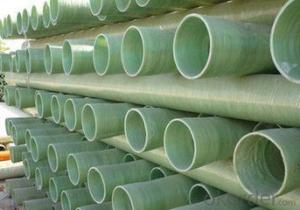Biaxial Fiberglass Cloth: A Fabric of Strength and Versatility
Have you ever wondered what keeps our modern infrastructure robust and resilient? One of the key components is biaxial fiberglass cloth, a material that has revolutionized the way we reinforce structures. This fabric is not just a layer of protection but a multi-directional reinforcement that adds strength and flexibility to various applications. Let’s dive into the world of biaxial fiberglass cloth and explore its unique properties and applications.
The Essence of Biaxial Fiberglass Cloth
Biaxial fiberglass cloth is woven from fiberglass fibers that are arranged in two perpendicular directions, giving it the name ‘biaxial.’ This arrangement provides the cloth with exceptional strength and dimensional stability. It’s like having a superhero cape that’s not only strong but also incredibly versatile. The fibers are treated with a special resin to bind them together, creating a fabric that’s lightweight yet incredibly durable.
Why Biaxial Fiberglass Cloth Stands Out
What sets biaxial fiberglass cloth apart from other reinforcement materials is its multi-directional strength. It can withstand forces from various angles, making it ideal for applications where traditional uni-directional reinforcements would fall short. This is particularly useful in construction, where structures are subjected to stresses from multiple directions.
Applications Beyond Construction
While biaxial fiberglass cloth is a construction favorite, its applications extend far beyond that. It’s used in the marine industry for boat hulls and decks, providing lightweight and durable solutions that can withstand the harsh marine environment. In the automotive sector, it’s used for lightweight components and parts that require high strength-to-weight ratios. Even in the aerospace industry, biaxial fiberglass cloth plays a role in creating components that are both strong and lightweight.
The Process of Making Biaxial Fiberglass Cloth
The process of creating biaxial fiberglass cloth is a blend of art and science. It starts with the selection of high-quality fiberglass fibers, which are then woven together in a precise pattern. The weaving process is carefully controlled to ensure the fibers are aligned perfectly in both directions. After weaving, the cloth undergoes a series of treatments, including resin application and curing, to enhance its strength and durability.
A Closer Look at the Benefits
One of the standout benefits of biaxial fiberglass cloth is its resistance to corrosion and chemical damage. This makes it a top choice for environments where materials are exposed to harsh chemicals or corrosive substances. Additionally, its non-conductive nature makes it safe for electrical applications, reducing the risk of electrical hazards.
The Future of Biaxial Fiberglass Cloth
As technology advances, the uses of biaxial fiberglass cloth are expanding. Researchers are exploring its potential in new areas such as energy storage, where its lightweight and strong properties could be utilized in battery components. There’s also interest in using it for wearable technology, where its flexibility and strength could be harnessed for innovative applications.
Embracing the Versatility of Biaxial Fiberglass Cloth
Biaxial fiberglass cloth is more than just a material; it’s a testament to human ingenuity and the drive to create better, stronger, and more versatile solutions. It’s a fabric that has found its place in various industries, and as we continue to innovate, its applications will only grow. So, the next time you see a structure or product reinforced with this fabric, remember the strength and versatility it brings to the table.
In Conclusion
Biaxial fiberglass cloth is a remarkable material that has proven its worth in numerous industries. Its unique properties and applications make it an indispensable part of modern infrastructure. As we look to the future, the potential for this fabric to revolutionize even more areas is exciting to consider. Whether it’s in construction, marine, automotive, aerospace, or beyond, biaxial fiberglass cloth is a fabric of strength and versatility that will continue to play a vital role in our world.

